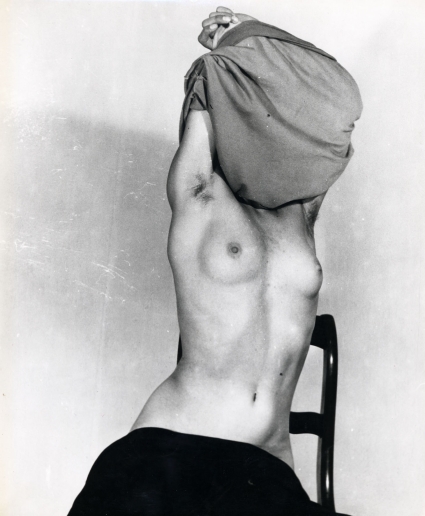The photographic work of Valdemar Hansen (Wally) Elenbaas (Rotterdam, 1912) constitutes only a small part of an impressive oeuvre resulting from more than sixty years of artistic endeavour. Apart from being a photographer, Elenbaas is also a gifted painter, sculptor and printmaker. But photography was the medium with which he began his artistic career in 1929. Elenbaas was unemployed as a result of the economic depression of the period and decided that he preferred the life of a poverty-stricken artist to that of an unemployed office clerk. He joined the Dutch Association of Worker Photographers and was, like Paul Schuitema and Piet Zwart, among the artists associated with the worker writers’ collective Links Richten (‘Eyes left’). During the great depression of the 1930s, Elenbaas identified with the class struggle of the proletariat and became a ‘worker photographer’. The only one of his films from that period that has survived intact shows street scenes populated by working class victims of the depression, intercut with abstract images in the style of the New Photography: austere compositions, many diagonals, unexpected angles and striking cropping of the image. Fairly quickly, however, Wally Elenbaas woke up to the bankruptcy of the Communist system under Stalin. After the war, following a brief Surrealist period, he abandoned professional photography to devote himself fully to painting, sculpture and printmaking. It was not until the 1980s that he made his official return to photography, picking up where he left off in the ’30s and searching for purity of photographic form in still lifes, street scenes and nudes. Throughout the long intervening period, however, he had never stopped taking photographs, albeit purely for his own use and enjoyment. The work he produced in those years is highly personal, but still displays his aesthetic preference for pure, almost graphic forms and lines. The majority of the works donated by Wally Elenbaas are private nude studies dating from between around 1958 and 1965. They are extremely intimate pictures of his wife Esther Hartog (1905-1998) and various female friends of the couple. Many of them have rarely been exhibited before. In addition, the donation includes a few dozen photographs representing a cross-section of Elenbaas’ oeuvre: from the early portraits and formal studies of the 1930s to more recent street scenes and still lifes made in the 1980s.
Fotomuseum Den Haag Stadhouderslaan 43 | Postbus 72 | 2517 HV Den Haag
